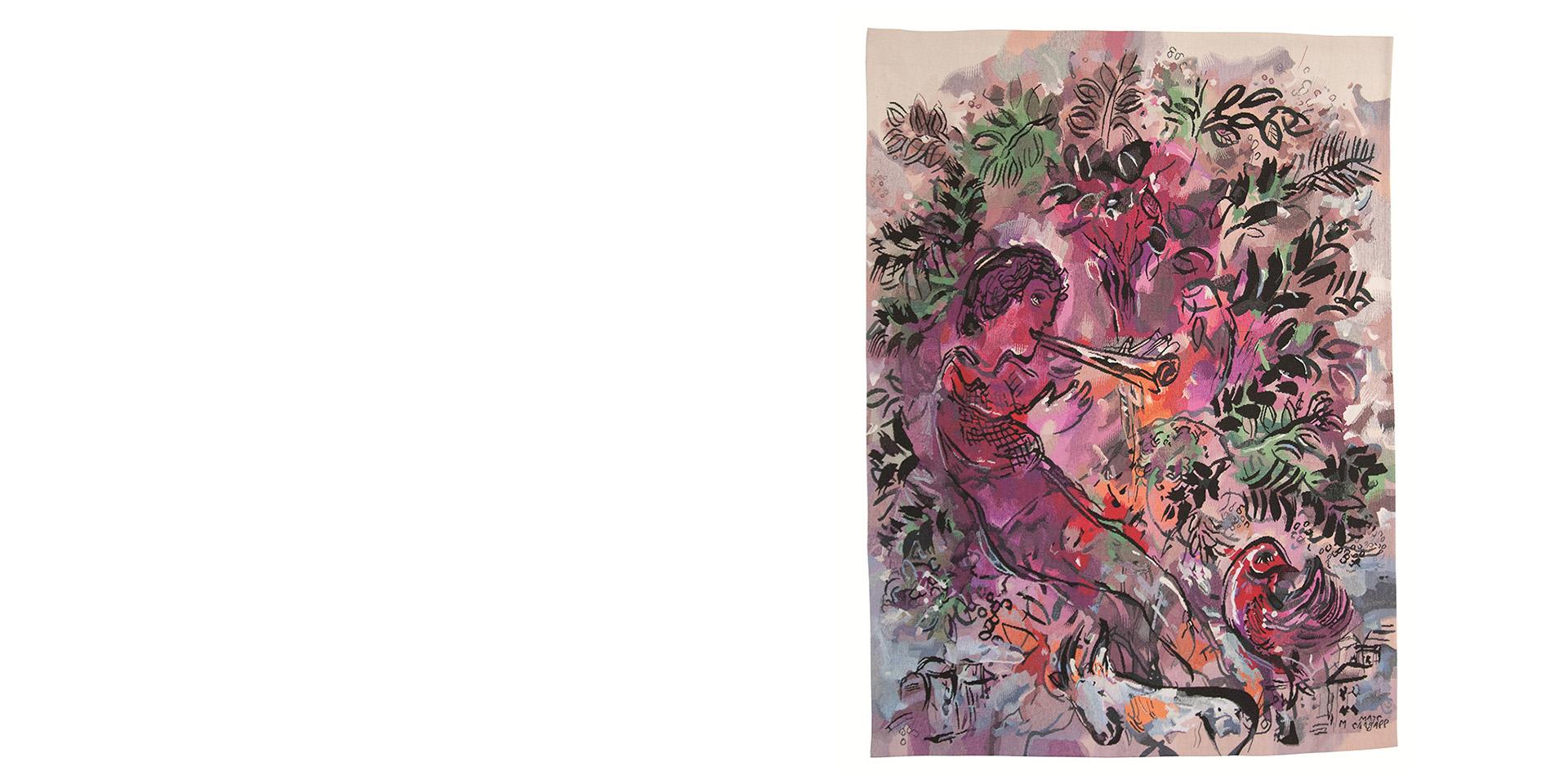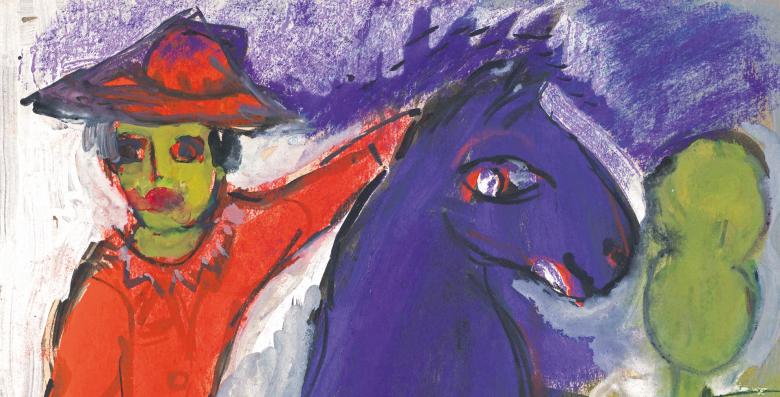On the occasion of the 30th anniversary of Chagall's death, the Marc Chagall National Museum invites the public to discover a lesser known part of the artist's production: his woven work.
After the Second World War, Chagall settled in the south of France and began to experiment with techniques other than painting and engraving. The artist sought to extend his plastic experiments: ceramics, stained glass, sculpture, mosaics and tapestry mobilised his energy.
During his lifetime, Chagall saw 20 tapestries "fall off the loom", destined for the decoration of public buildings or for private collectors. These tapestries, based on works by Chagall, were made in close collaboration with the weavers of the Manufacture nationale des Gobelins or with a great tapestry specialist, Yvette Cauquil-Prince.
Chagall and tapestry
The first tapestries were woven at the Manufacture nationale des Gobelins in Paris between 1965 and 1968. It was a set of three monumental tapestries for the Knesset hall in Jerusalem. In 1970-1971, the Manufacture des Gobelins was again commissioned to produce a tapestry for the future Marc Chagall National Biblical Message Museum in Nice.
However, most of the woven work was made after Chagall's works under the direction of Yvette Cauquil-Prince. A major protagonist of the 20th century tapestry revival, Yvette Cauquil-Prince (1928-2005) devoted her know-how and talent to transcribing into tapestry the works of the greatest artists of the time: Pablo Picasso, Max Ernst, Paul Klee...
Chagall met her in 1964. From then on, a fruitful dialogue began that lasted two decades, and even longer, in the tapestries that Yvette Cauquil-Prince continued after Chagall's death in 1985.
A brilliant interpreter of the master's work, she excelled in the reproduction of pictorial effects through the medium of tapestry. She transposed into the woven work all the expressive richness of the painted, engraved or drawn work. The first small tapestries were followed by larger pieces, thus showing the model in a new format. In her capacity as a master builder, Yvette Cauquil-Prince does not limit her intervention to the reproduction of a model or its enlargement. By changing the medium and format, she offers a different reading of Marc Chagall's work.
First exhibition of tapestries at the Musée national Marc Chagall
This is the first time that the Marc Chagall National Museum has honoured this technique, represented in its collections by a single piece created for the museum, Mediterranean Landscape.
The exhibition Marc Chagall. Woven Works is displayed throughout the museum. It offers an exceptional confrontation of 12 shimmering or more nuanced tapestries with 12 original works by Chagall that served as models for the weaving.
The tapestry created for the opening of the museum (1973) as well as the test print, a detail approved by Marc Chagall for the Knesset tapestries, will evoke the achievements with the Gobelins. The other tapestries on display showcase Yvette Cauquil-Prince's talent as an interpreter.
The exhibition also allows us to understand the degree of freedom and interpretation left to the master of the work. A room is dedicated to the tapestry technique where the public can discover the materials necessary for weaving.
A monumental transposition of Marc Chagall's colourful verve, the woven work is an extension of the painted or engraved work. It thus invites us to think about the decompartmentalization of creation, beyond the borders between artistic disciplines.
The exhibition was previously presented at the Musée d'Art Moderne de Troyes from 6 September 2014 to 11 January 2015 and adapted for presentation at the Musée National Marc Chagall in Nice.
The exhibition is accompanied by the exhibition catalogue "Chagall, de la palette au métier", Musée d'art moderne de Troyes, Editions Snoeck, 2014. 215 pages, 28 €.
Curated by
Anne Dopffer, General Curator of Heritage, Director of the National Museums of the 20th Century in Alpes-Maritimes
Sarah Ligner, heritage curator, Marc Chagall National Museum
Visuel : tapisserie réalisée d'après Le Garçon dans les fleurs (1955), de Marc Chagall. Maître d'œuvre : Yvette Cauqil-Prince © ADAGP, Paris, 2021.
Open every day except Tuesdays, 25 December and 1 January.
From 2 May to 31 October: from 10am to 6pm
From November 1st to April 30th: from 10am to 5pm
Ticket sales stop 30 minutes before the museum closes.
Prices (including the permanent collection) :
Full price: 9€
Reduced rate: 7€
Group rate: 7.50€ (from 10 people)


